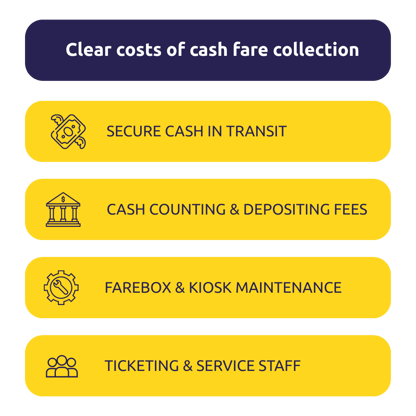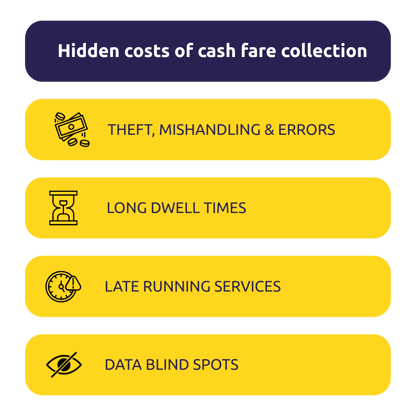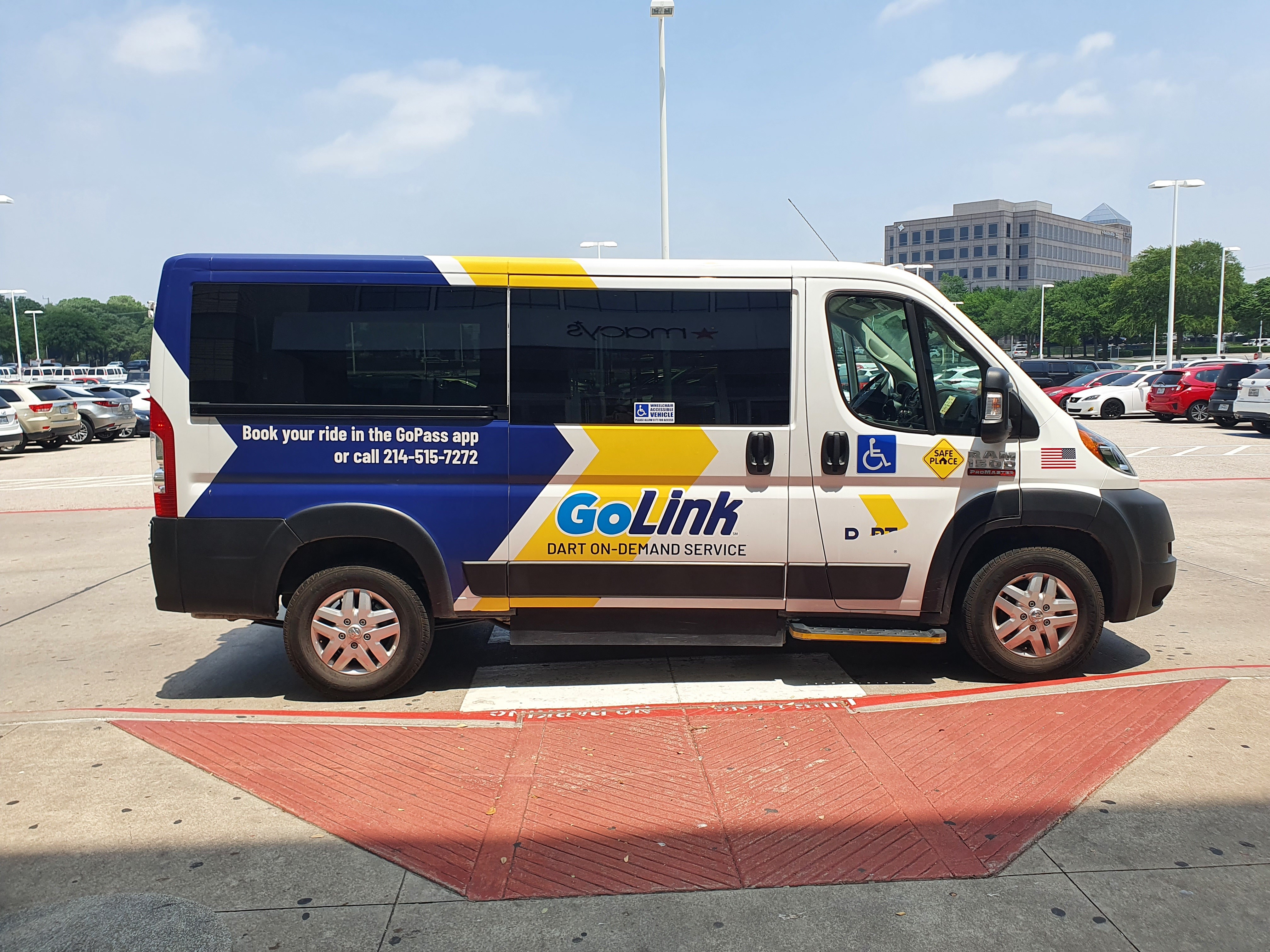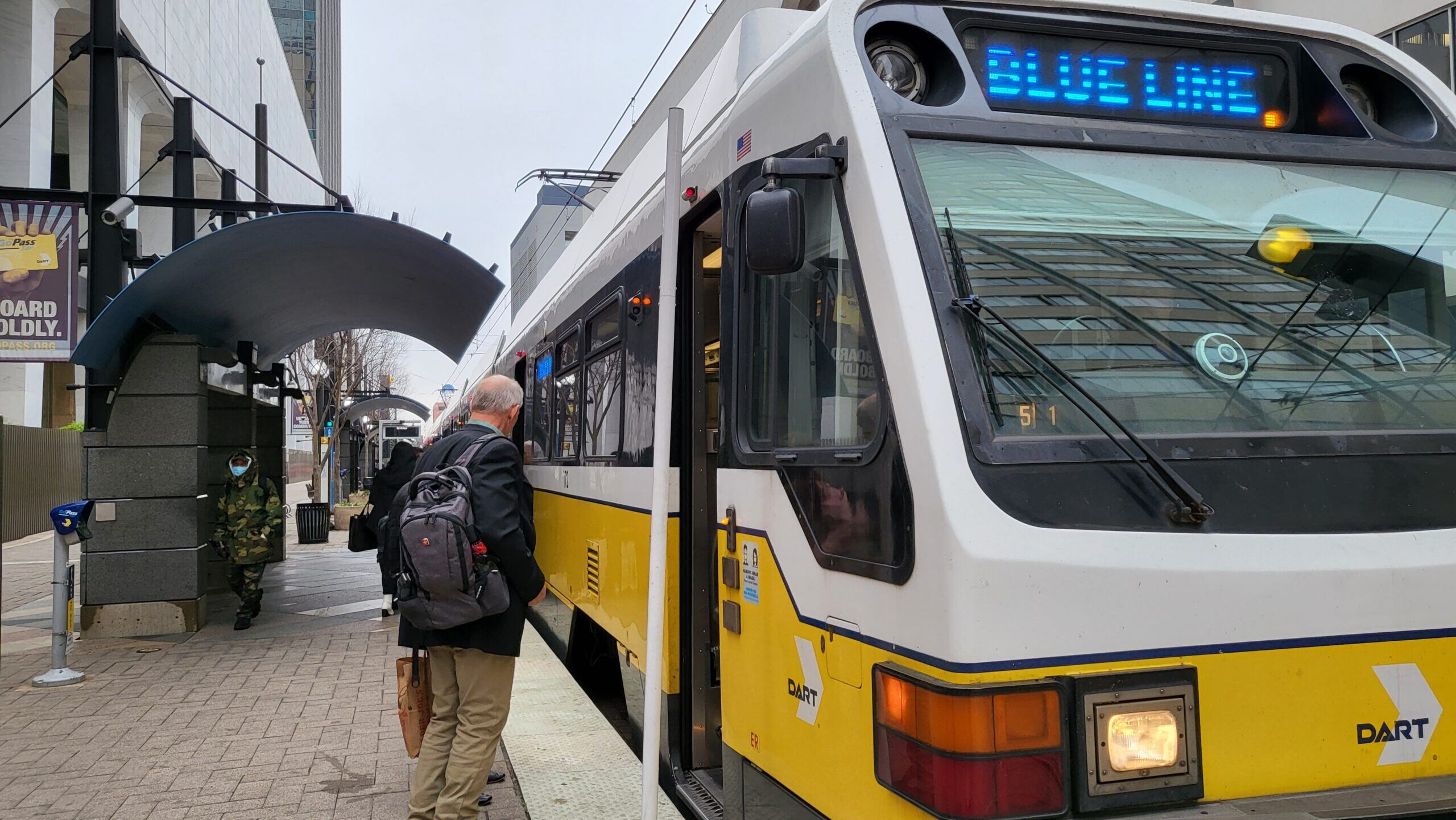
On the surface, cash transit payments seems simple. No apps or accounts, just the exchange of coins and bills for a paper ticket. But every time a rider hands a dollar to a driver, or slots quarters into a farebox, transit agencies pay a price. Let's explore the real cost of cash fare collection.
Cost has long been on the minds of transit agencies, but in 2025 it became acute. With a fiscal cliff looming, transit agencies are being forced to consider cost-cutting routes. This could mean making decisions that have a far-reaching (and possibly irreversible) impact on the future of transit.
There’s certainly no-one to blame. Against the “rock” of dwindling government funding and the “hard place” of post-pandemic ridership, it’s not easy to see alternatives. But some transit agencies are looking to fare collection transformation to improve their outlook.
It might not be immediately obvious but fare collection is a giant opportunity for cost-cutting. While changing the way we collect fares isn’t an instant cure to cash flow worries, addressing some of the inefficiencies of cash that chip away at daily margins can start to turn things around.
The sooner transit agencies begin transitioning away from a major cause of financial drain - traditional cash fare collection - the sooner they will see the difference in their future prospects.
The cost centre of cash – and its many layers
The farebox system - collecting, handling, securing and banking cash - takes its toll on transit agencies' revenue. Some of the costs are clear, while others are hidden.
1. The costs that are easy to see

The visible costs of cash are familiar, although often accepted as inevitable. Agencies don’t always add the expenses up and consider what could be gained by removing them.
In fact, the total cost per month of handling cash, securing it in transit, counting and depositing money, maintaining fareboxes, and involving staff in cash transactions at ticket offices or on vehicles, can be substantial.
Once you know that figure, ask how many service lines it would help your agency to keep running. Or how else you might invest the funds to improve transit services.
Rebecca Walner, CFO at MetroLink Tulsa (MTTA), says:
“I always advise agencies to add up everything they’re paying for that’s nickel and diming them, and weigh up the cost of change against the cost of continuing that same way.”
Even though many of these costs are familiar, they’re still painful, and we’re also not as shackled to them as we think we are. And once we look at the non-obvious costs, the reasons to move away from cash become more and more clear.
2. The hidden costs few agencies track
 If your total monthly figure for familiar cash costs seems high, the hidden costs take it to a level that might surprise you.
If your total monthly figure for familiar cash costs seems high, the hidden costs take it to a level that might surprise you.
With coins and bills, there’s often no clear audit trail, and that's a big headache for agencies striving for efficiency. Cash-related issues include human error, extended dwell times, services that don't run on time when cash transactions make boarding sluggish.
When these problems are untracked and unsolved, the drip, drip, drip of revenue leakage pools into vast sums over time.
Drivers lose precious seconds at every stop counting fares, giving change, and manually tallying passenger numbers. With 2.9–5.1 seconds per cash transaction, it only takes 900 cash transactions to lose an hour. Imagine the hours of lost service daily across large networks.
Data blind spots are arguably even more damaging. Cash fare systems can only tell you how much money was collected before the driver delivered the farebox. They can’t tell you who’s riding, when and where they boarded, or how often the passenger uses different routes.
Take a moment to consider how you would design your services if you could see more detail: the routes each passenger regularly takes, the times they regularly ride them, and even where their journey might intersect with another network or mode of transit.
With that information you could more precisely design service lines to meet demand, along with the kinds of fares and tickets available to passengers. Right now you might currently offer a five-day travel pass for commuters, but with the right information, you might see a large proportion of riders only commute two or three days a week. Using this insight, you could create a pass (or fare cap) that’s designed around their travel needs, and which gives them more incentive to ride transit.
3. The cost of lost opportunity
The more agencies can transition away from cash, the more the nickel and dime costs of cash collection - secure CIT, bank deposit fees, farebox maintenance, ticket kiosk staffing and so on - can be reallocated where they’re needed more: to run more frequent and more reliable services for riders.
Instead of fearing the cost of fare collection modernizaton, you might consider whether you can afford not to change. You might be turning your back on results like these:
- 14% average reduction in cost per passenger
- 4.8 out of 5 average ride rating
- 95% average on time performance
This is real data from MetroLink Tulsa on what it was able to achieve by transitioning away from cash. By adopting GoPass®, a mobility app created in partnership by Kuba and Dallas Area Rapid Transit (DART), MTTA has been able to deliver multimodal journey planning and ticketing for residents and visitors in Tulsa, all within a single mobile app. If you're curious to explore a similar route, this multi-tenanted app can be purchased directly from DART and rolled-out in as little as one month.
Consider whether you're willing to forfeit the benefit of an uplift in ridership, and what that could mean for your balance sheet. Through more reliable and timely services, and more convenient fare options, transit agencies directly impact how often people choose to take the bus.
For instance, in the first two years after Monterey-Salinas Transit (MST) began phasing out cash with a contactless system procured through Cal-ITP, ridership increased by 48.8%.
Redefining the transit experience isn't easy, but the opportunity is worth it
We should know, because our expert team is spearheading mobility payments innovation - some of us have been doing it for three decades. We’ve helped 500 cities and regions around the world transform their ticketing systems, deploying account-based ticketing, open-loop fare collection, and mobility apps.
Now, as a strategic partner with Cal-ITP and GoPass®, we’re at the forefront of the contactless and mobile revolution that is shaping the future of mobility in North America.
It’s time to talk about moving on from cash and improving the outlook for U.S. transit agencies. For more insight - and lessons learned by transit agencies already leading the way with contactless and mobile fare technologies - read our white paper: A roadmap for reinventing fare collection.
Download our white paper




